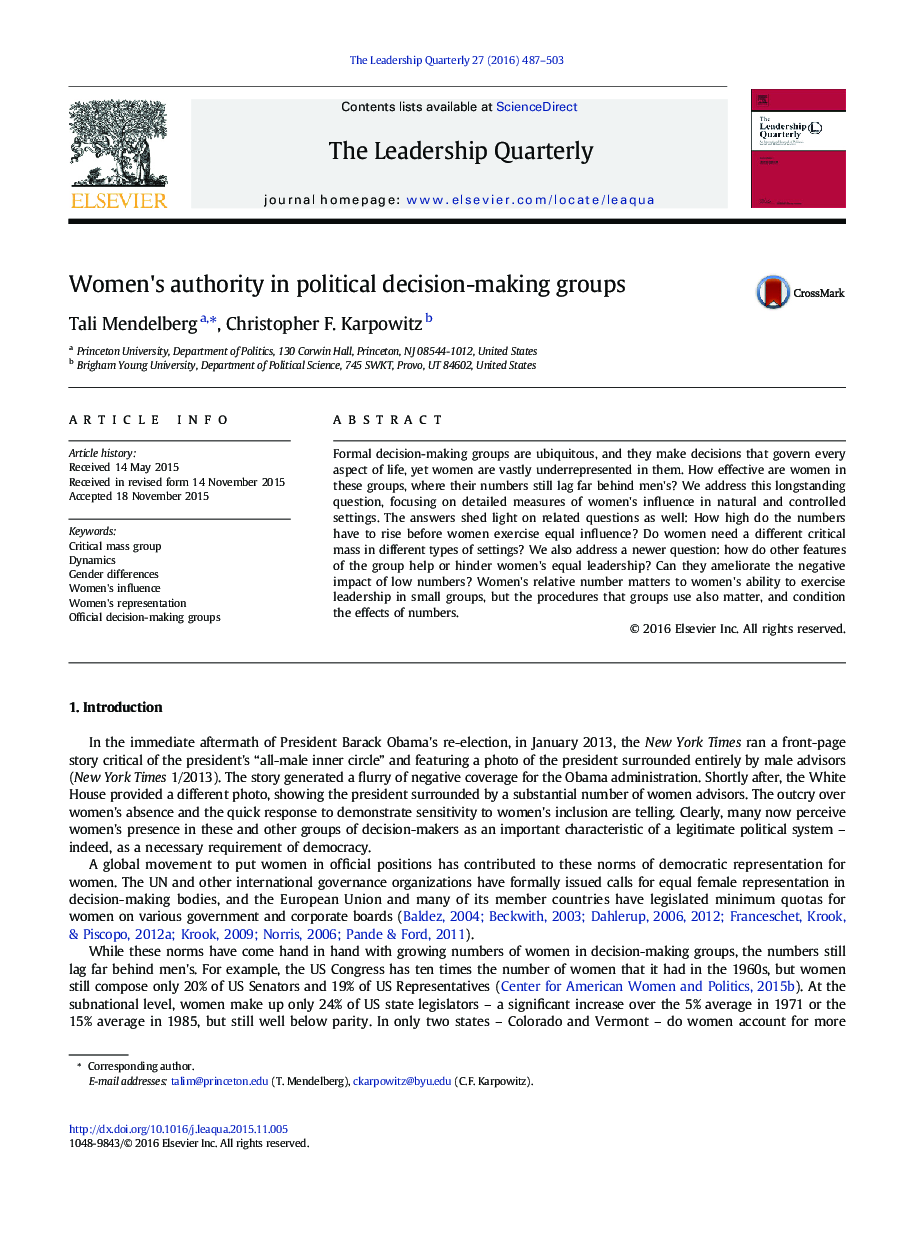| Article ID | Journal | Published Year | Pages | File Type |
|---|---|---|---|---|
| 887698 | The Leadership Quarterly | 2016 | 17 Pages |
Formal decision-making groups are ubiquitous, and they make decisions that govern every aspect of life, yet women are vastly underrepresented in them. How effective are women in these groups, where their numbers still lag far behind men's? We address this longstanding question, focusing on detailed measures of women's influence in natural and controlled settings. The answers shed light on related questions as well: How high do the numbers have to rise before women exercise equal influence? Do women need a different critical mass in different types of settings? We also address a newer question: how do other features of the group help or hinder women's equal leadership? Can they ameliorate the negative impact of low numbers? Women's relative number matters to women's ability to exercise leadership in small groups, but the procedures that groups use also matter, and condition the effects of numbers.
